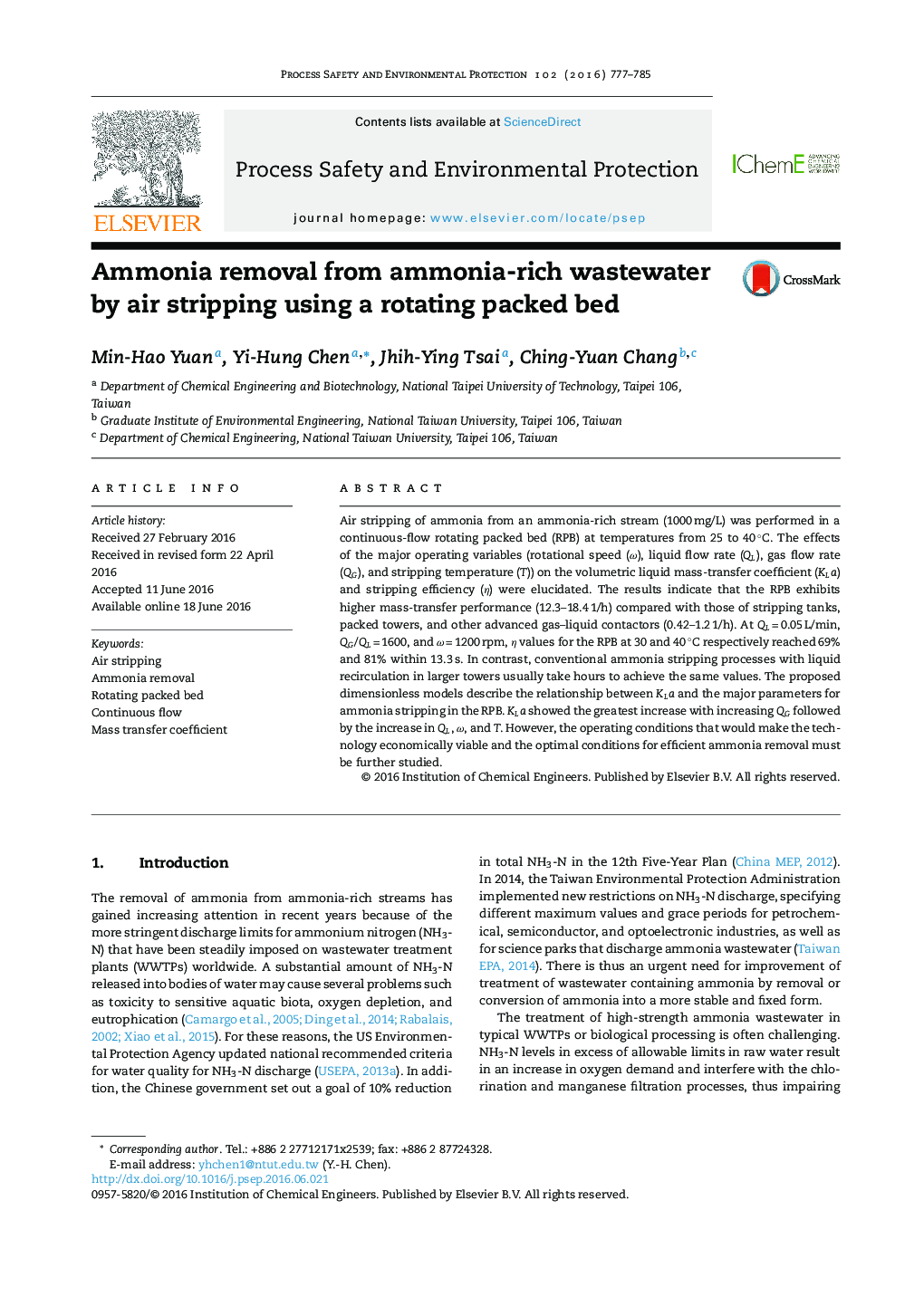| کد مقاله | کد نشریه | سال انتشار | مقاله انگلیسی | نسخه تمام متن |
|---|---|---|---|---|
| 588128 | 1453336 | 2016 | 9 صفحه PDF | دانلود رایگان |
• A continuous-flow rotating packed bed (RPB) was evaluated for ammonia stripping.
• The RPB holds the advantages of small size and short retention time for ammonia stripping.
• The roles of air and liquid flow rate in mass transfer and stripping efficiencies of RPB were examined.
• The continuous-flow RPB is a promising alternative stripping process for ammonia rich wastewater.
Air stripping of ammonia from an ammonia-rich stream (1000 mg/L) was performed in a continuous-flow rotating packed bed (RPB) at temperatures from 25 to 40 °C. The effects of the major operating variables (rotational speed (ω), liquid flow rate (QL), gas flow rate (QG), and stripping temperature (T)) on the volumetric liquid mass-transfer coefficient (KLa) and stripping efficiency (η) were elucidated. The results indicate that the RPB exhibits higher mass-transfer performance (12.3–18.4 1/h) compared with those of stripping tanks, packed towers, and other advanced gas–liquid contactors (0.42–1.2 1/h). At QL = 0.05 L/min, QG/QL = 1600, and ω = 1200 rpm, η values for the RPB at 30 and 40 °C respectively reached 69% and 81% within 13.3 s. In contrast, conventional ammonia stripping processes with liquid recirculation in larger towers usually take hours to achieve the same values. The proposed dimensionless models describe the relationship between KLa and the major parameters for ammonia stripping in the RPB. KLa showed the greatest increase with increasing QG followed by the increase in QL, ω, and T. However, the operating conditions that would make the technology economically viable and the optimal conditions for efficient ammonia removal must be further studied.
Figure optionsDownload high-quality image (186 K)Download as PowerPoint slide
Journal: Process Safety and Environmental Protection - Volume 102, July 2016, Pages 777–785
